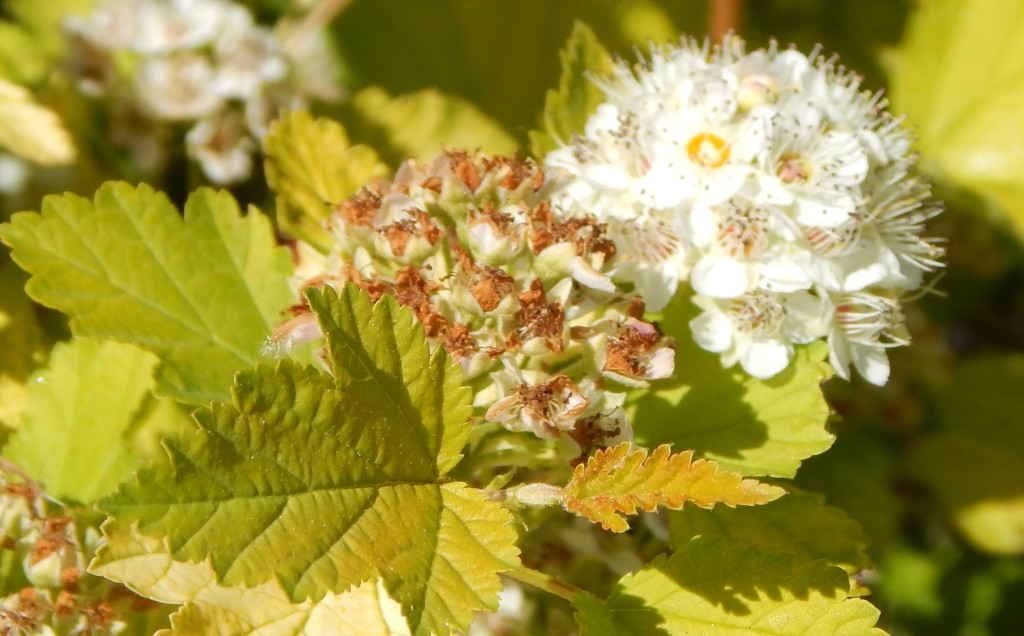
[264] Physocarpus opulifolius, Ninebark
Introduction
Physocarpus opulifolius, Ninebark, is a deciduous shrub cultivated in Britain as an ornamental shrub, often as a hedge.
Other species of Physocarpus are also called Ninebarks and Physocarpus opulifolius may be called Common, Eastern or Atlantic Ninebark. When sold as a garden plant it is generally called Physocarpus opulifolius in a number of varieties and cultivars.
Hydrangea radiata, the Silverleaf Hydrangea or Snowy Hydrangea is sometimes also called Ninebark.
Taxonomy
Kingdom – Plants
Division – Vascular Plants
Class – Angiosperms (Flowering Plants)
Order – Rosales
Family – Rosaceae
Subfamily – Amygdaloideae
Tribe – Neillieae
Genus – Physocarpus
Scientific Name – Physocarpus opulifolius
Cultivars are available.
Name
Ninebark refers to the peeling bark of some mature branches. (See text below.).
Physo-carpus is Latinized Greek for bladder-fruit from the shape of some species. Opulus is the Latin for a type of Maple tree so opuli-folius must mean that its leaves are shaped like [002] Maples.
Description
Physocarpus opilifolius is a small, bushy shrub.

Its leaves are lobed and serrated.
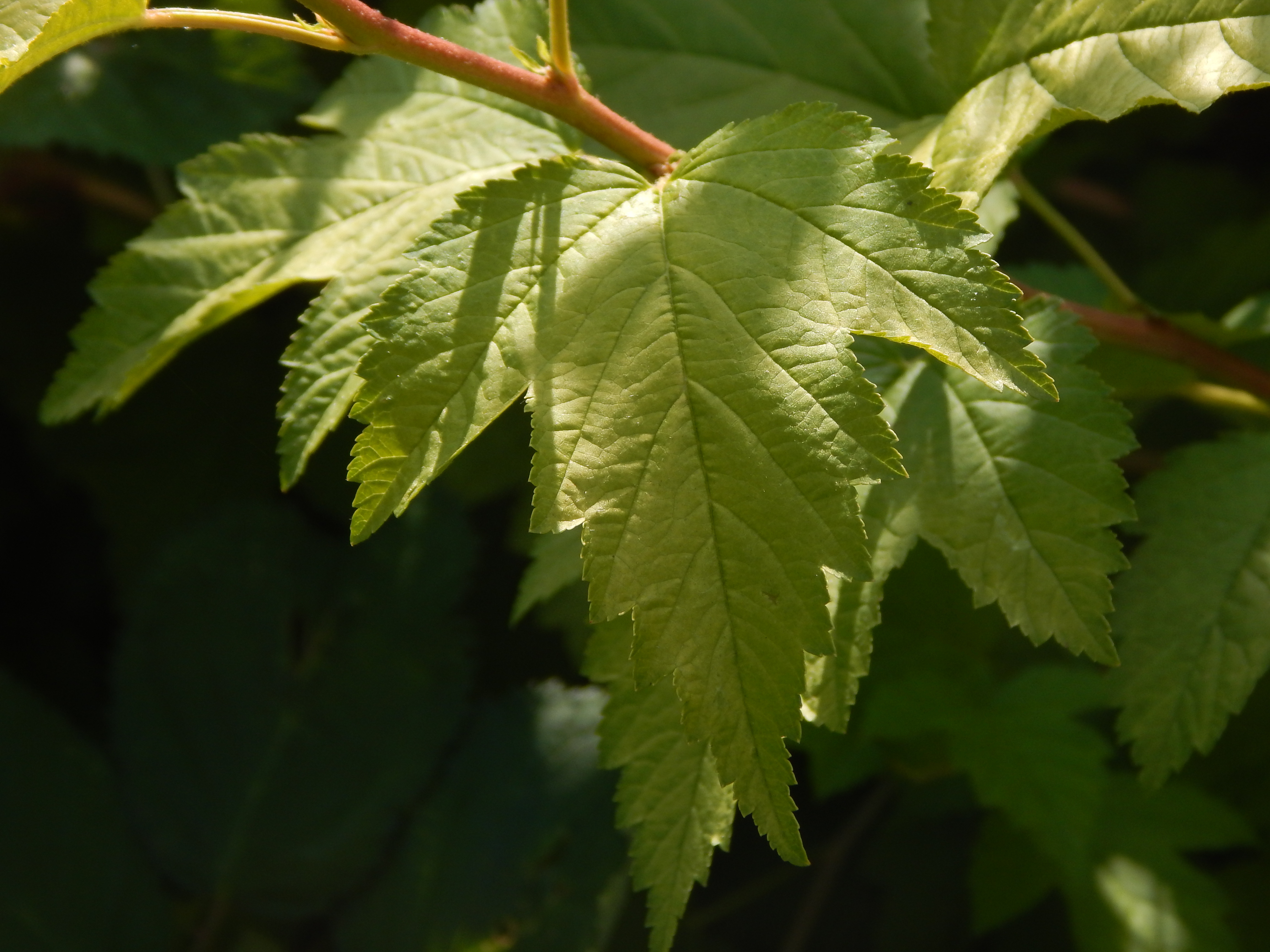
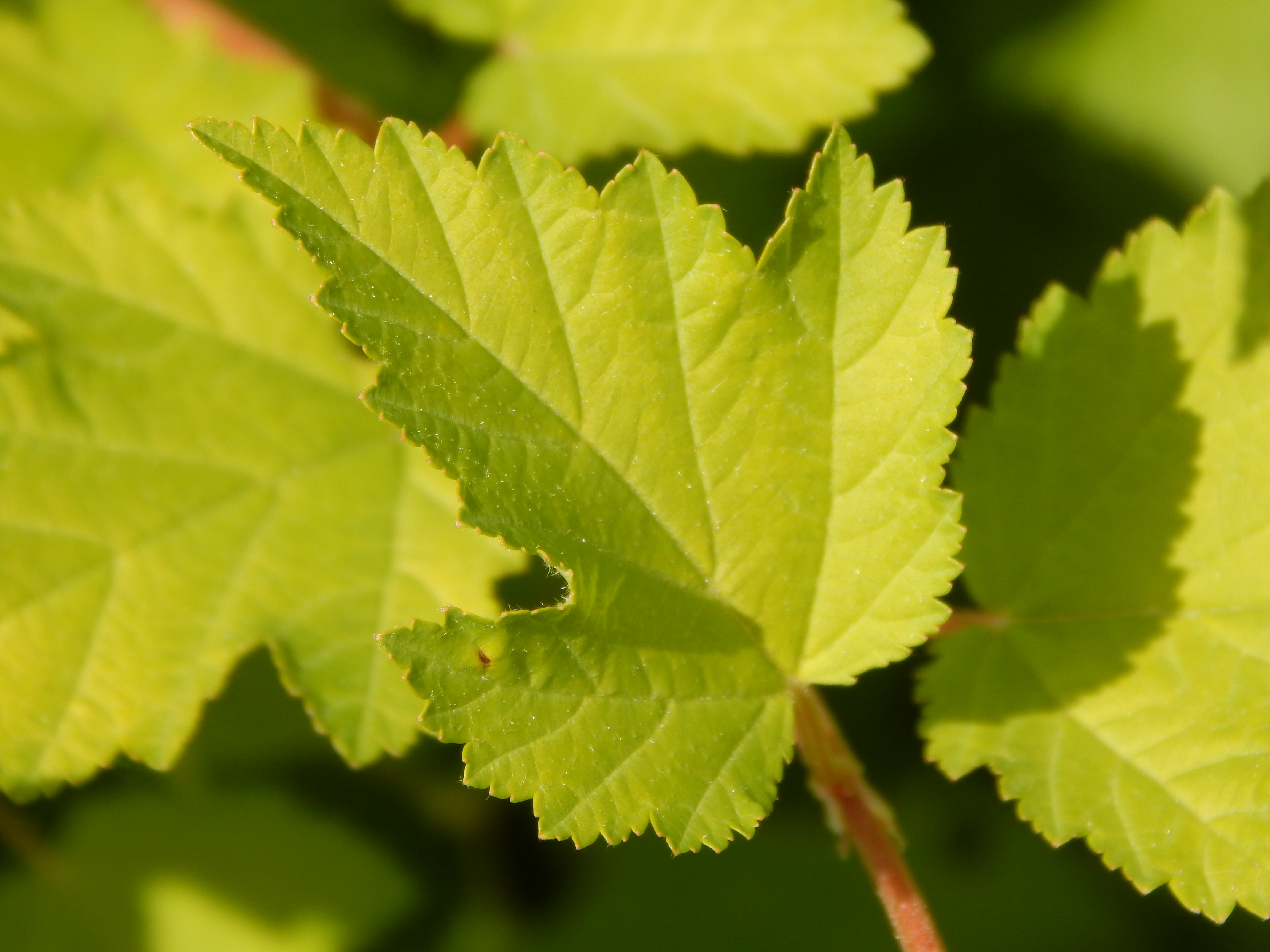
Its small five-petalled flowers grow in a tight, almost flat inflorescence called a corymb. They are from white to light pink. Fruits are small, dry papery pods.
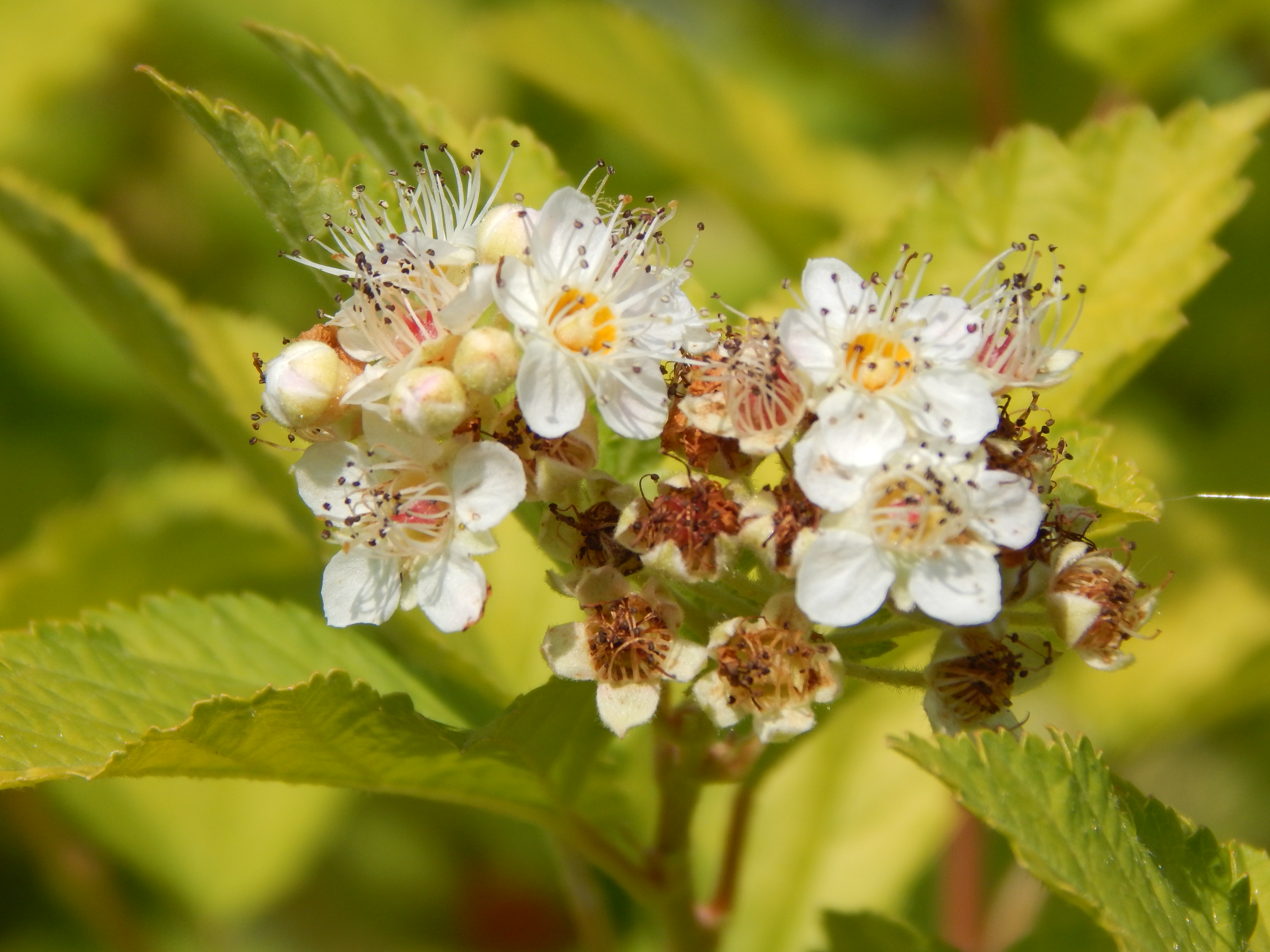
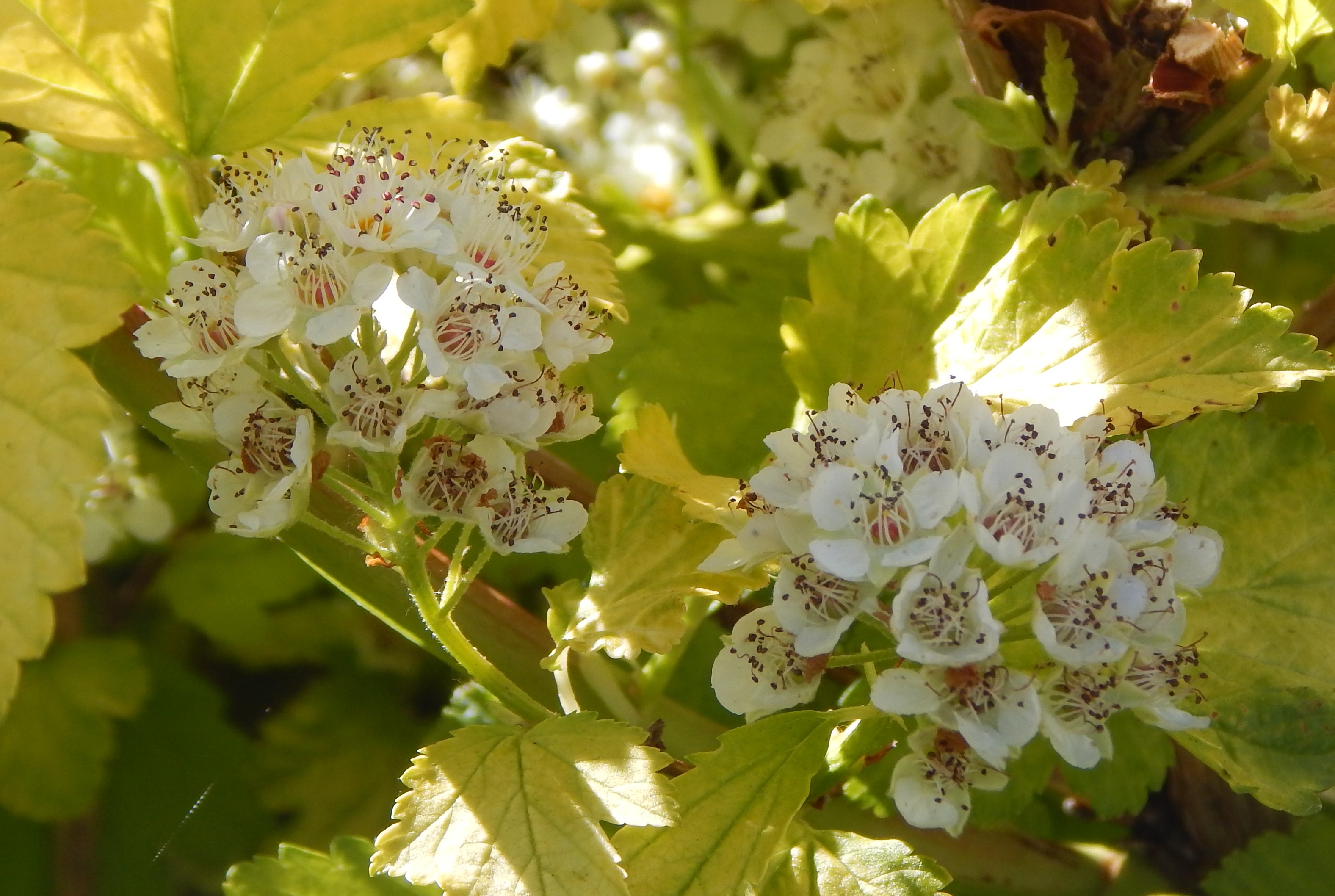
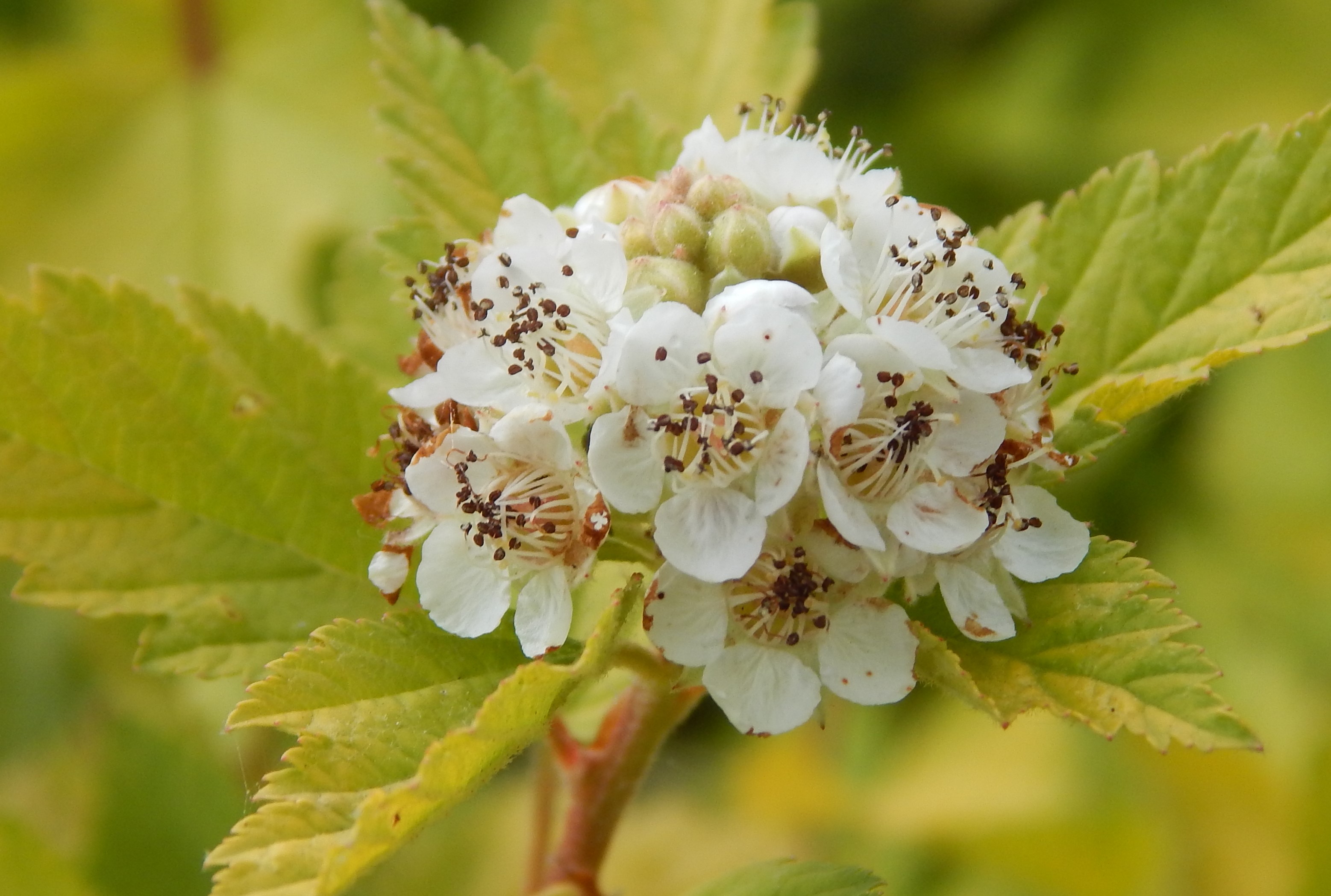

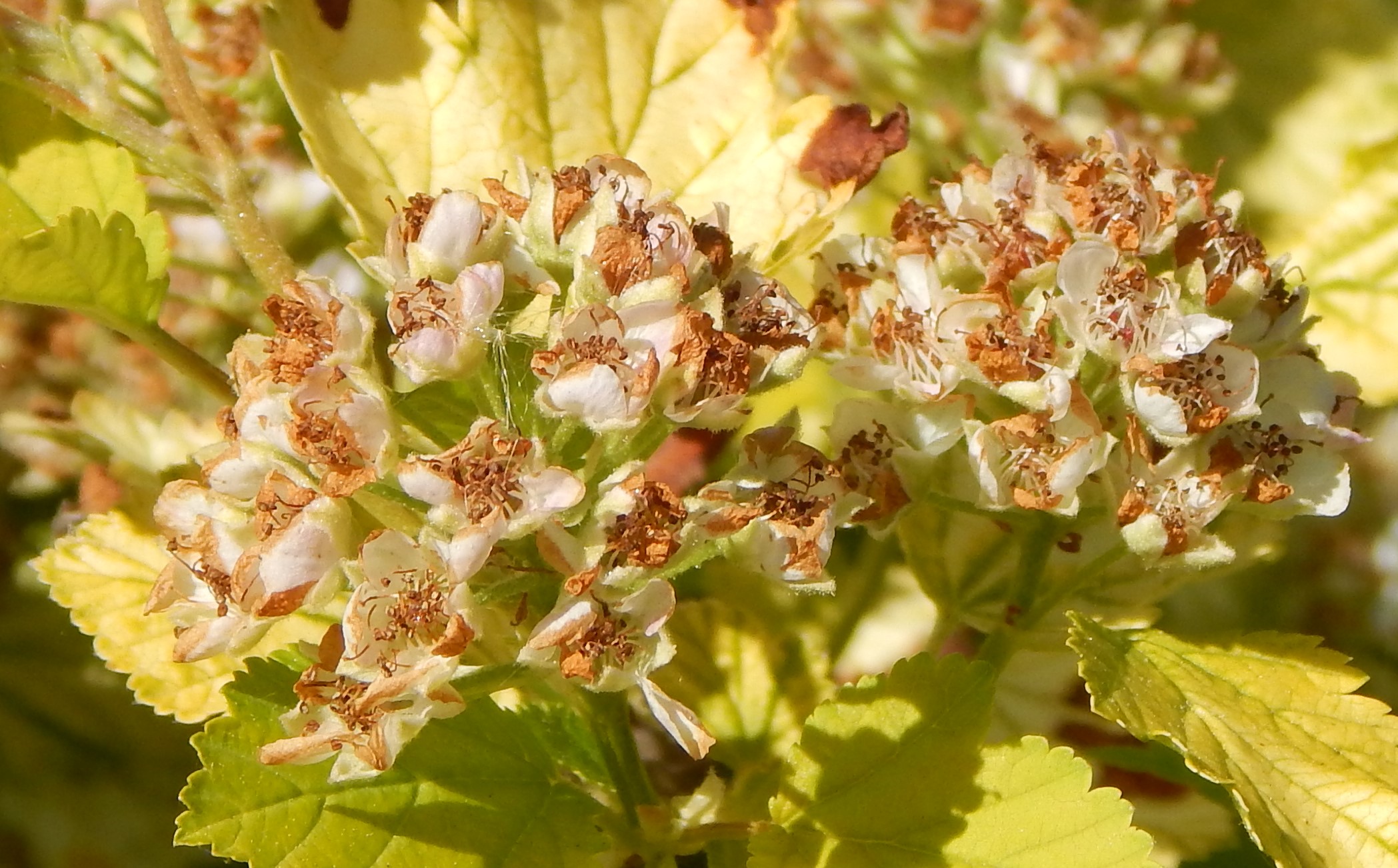
The bark can peel off in thin papery strips, curling up in the shape of a ‘9’
Habitat and use
Physocarpus opilifolius has two similar forms found in rocky locations in the USA.
It can be grown to control erosion on river banks. Several cultivated varieties have been bred with various foliage colourings.
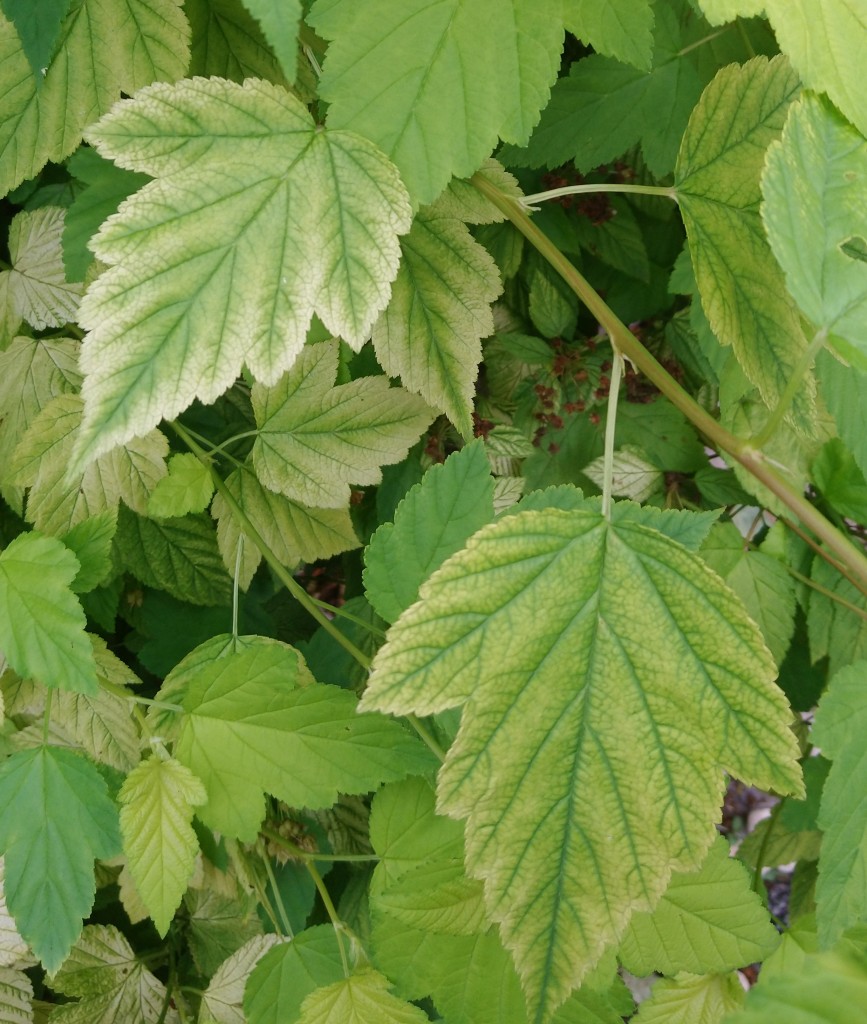
It is suitable for use as a hedge.
Other Notes
I have only seen this plant as a hedge where its dense format makes it impossible to see the bark that gives it its name.
